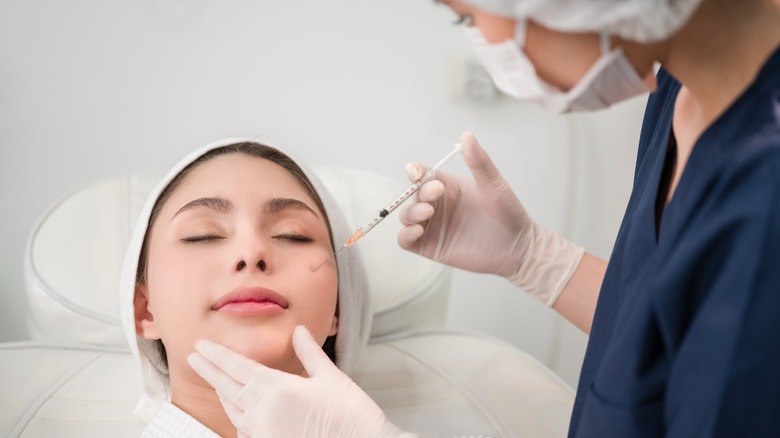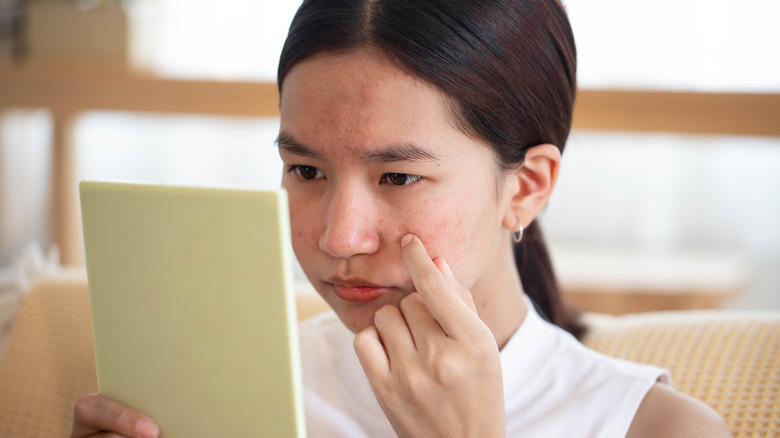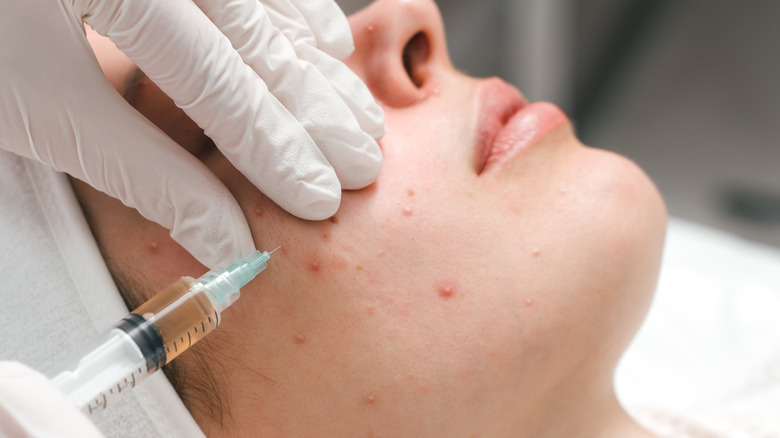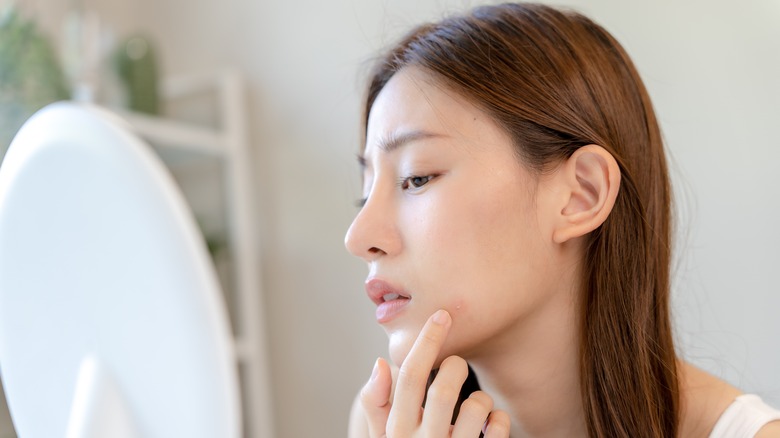Filler As An Acne Scar Treatment? What You Need To Know Before Trying
Acne is one of the most common skin conditions, and we've all probably had our brush with it at one point or another. If you've never struggled with acne, you should consider yourself lucky. Scratch that — very lucky! Acne shows up when the hair follicles that lie beneath our skin get clogged. Typically, the natural oils our skin produces, known as sebum, can clog our pores along with dead skin cells. This combination of sebum and dead skin can result in the perfect environment for bacteria to thrive. This causes what we call acne, along with inflammation, redness, and swelling. The worst part about acne, in our opinion? The scars it leaves behind.
Acne scars can be irritating because they give your skin an unclear and unpleasant appearance. There are, however, many ways to tackle the issue and say goodbye to acne scars once and for all. One such solution is, in fact, filler! And we're here to fill you in all about it.
Why do we get acne scars?
Before we explain how skin filler can help treat acne scars, it's important to understand what commonly triggers acne in the first place. Acne scars form when acne reaches the tissue deep within your skin and damages it. In fact, there are even different types of acne scarring, and identifying which ones are visible on your skin can help you understand how best to treat them.
Acne scars are characterized by five main types. The first is the ice-pick scar, which can be identified by its narrow nature. These scars look like tiny little holes in your skin. The next type is atrophic scars, which are commonly flat and don't go as deep as ice-pick scars. Boxcar scars have a boxy appearance that is hard to miss, making them quite easy to identify. Additionally, acne scars known as rolling scars can be quite organic as far as their shape goes, as they don't have clearly defined edges; this makes your skin look textured and crinkly. The final type of acne scar is the hypertrophic scar which forms a lump on top of the skin's surface as opposed to a depression, as seen in the previous types.
Skin filler
So, how exactly does filler help with acne scarring? Well, skin filler, also known as dermal filler, is a substance that is injected into your skin, making it appear plumper and smoother. This is why it's the perfect solution for most acne scars. The depressed skin can be plumped up and smoothened by injecting it with filler. If you decide to go ahead with it, after doing ample research, you can expect to pay anywhere from $600 to $1,200 for each treatment.
This, however, is a rough estimate and can vary depending on the clinic you choose and how much filler your dermatologist or skin specialist deems necessary. Obtain more than one consultation before getting the procedure done to ensure you get the treatment best suited to your skin and its needs. A professional can help you make these decisions, so make sure you pick the right person for it.
What you need to consider
Of course, there are many other things to consider before getting filler to treat your acne scars. The first is safety. Getting dermal filler has become a quite common procedure with few risks associated with it, so you should be fine. That said, this doesn't mean the process is 100% risk-free. This is why your dermatologist will likely carry out an allergy test beforehand. Some side effects to look out for include bruising, swelling, itching, and redness. If you notice any of these side effects, you may be allergic to the filler.
You should also consider how much money you are able to allocate for not only the procedure but also the maintenance that comes with it. You will likely need to have it redone every six months to two years. You must also make sure to tell your consultant what you would like the filler to do, such as, for example, help with acne scarring. This can help them recommend the best type of filler for your needs. For instance, a filler that is collagen-based is best for treating acne scars.
Other scar treatments
If getting skin filler is not a commitment you're willing to make to treat your acne scars, this is okay, since it's not your only option by far. You could also try these options before you get filler to see if they may work for your skin. The first and most important alternative treatment is a good skincare routine, which doesn't have to be complex. Without one, your skin will not look its best because a consistent and reliable skincare routine is the key to solving most skin issues.
Make sure you include sunscreen in your routine because this will help prevent your skin from taking on an uneven tone when the sun hits your acne scars. Natural products, such as black seed oil, rosehip oil, honey, and aloe vera, can also be incorporated into your skincare routine to help fight acne scarring. In addition, other types of injections, such as steroid injections and Botox, can help treat acne scars. No matter which procedure you pick, make sure you do as much research as possible and talk to a medical professional to ensure you make the best choice.




